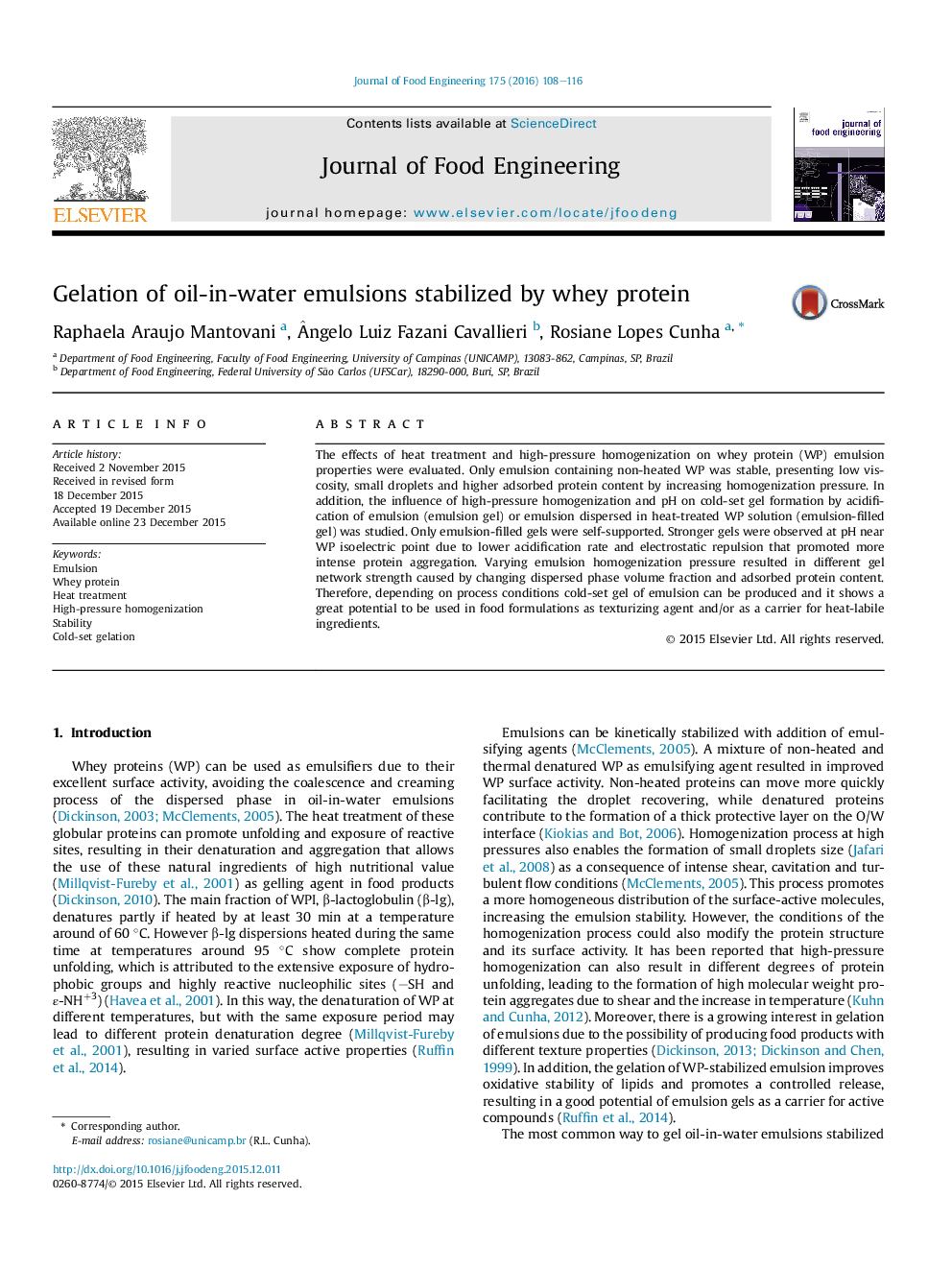| Article ID | Journal | Published Year | Pages | File Type |
|---|---|---|---|---|
| 222749 | Journal of Food Engineering | 2016 | 9 Pages |
•High-pressure homogenized emulsion containing non-heated whey protein (WP) was stable.•Stable emulsion dispersed in heat-treated WP aqueous solution gelled by acidification.•Gel strength depended of pH and homogenization pressure.•Cold gelation might increase the applicability of WP emulsions in food formulations.
The effects of heat treatment and high-pressure homogenization on whey protein (WP) emulsion properties were evaluated. Only emulsion containing non-heated WP was stable, presenting low viscosity, small droplets and higher adsorbed protein content by increasing homogenization pressure. In addition, the influence of high-pressure homogenization and pH on cold-set gel formation by acidification of emulsion (emulsion gel) or emulsion dispersed in heat-treated WP solution (emulsion-filled gel) was studied. Only emulsion-filled gels were self-supported. Stronger gels were observed at pH near WP isoelectric point due to lower acidification rate and electrostatic repulsion that promoted more intense protein aggregation. Varying emulsion homogenization pressure resulted in different gel network strength caused by changing dispersed phase volume fraction and adsorbed protein content. Therefore, depending on process conditions cold-set gel of emulsion can be produced and it shows a great potential to be used in food formulations as texturizing agent and/or as a carrier for heat-labile ingredients.
